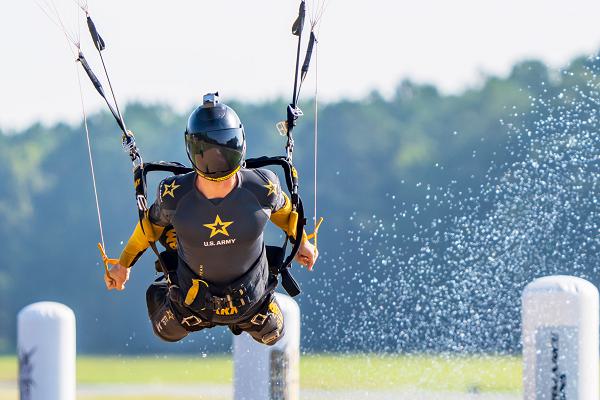
Raeford, North Carolina. (September 10, 2024): All most civilians know about the Airborne is what they’ve seen in films like the Band of Brothers, Soldiers jumping out of perfectly good airplanes drifting lazily to the ground. As you can imagine, there’s a lot more to it than that. In this photo by Megan Hackett, Army Staff Sergeant Mark Pierce, a member of the famed Golden Knights parachute team, performs an advanced canopy maneuver during a jumping competition held here this week.
The goal of every paratrooper is to effectively control their canopy as they direct their “flight” to the ground. The first consideration in “piloting” a parachute is the type of canopy involved. Canopy designs have evolved over the years from round to square to elliptical shapes which has increased the need for parachute control. A paratrooper controls a canopy by pulling on steering lines connected to “toggles” that direct the parachute’s flight. The trooper can toggle left and right or pull both toggles to slow the parachute’s descent. As every type and size of parachute flies differently under varying weather conditions, an expert parachutist must understand the subtleties of canopy flight to ensure a safe landing.
In combat, an Airborne Soldier uses advanced canopy maneuvers to create vertical separation from other jumpers as they leave the plane. They will use these same controls to maintain the integrity of their canopy as they fly their parachutes long distances to a designated landing area. For these reasons, America’s most seasoned paratroopers regularly practice these advanced canopy maneuvers to safely “fly” their parachutes in combat.
(Editor’s Note: When I served in the Army, a “Leg” was a derisive term used by Airborne troops to describe anyone who had not passed jump school. As a “Leg,” I would always reply “Yes, my legs work just fine.”)


